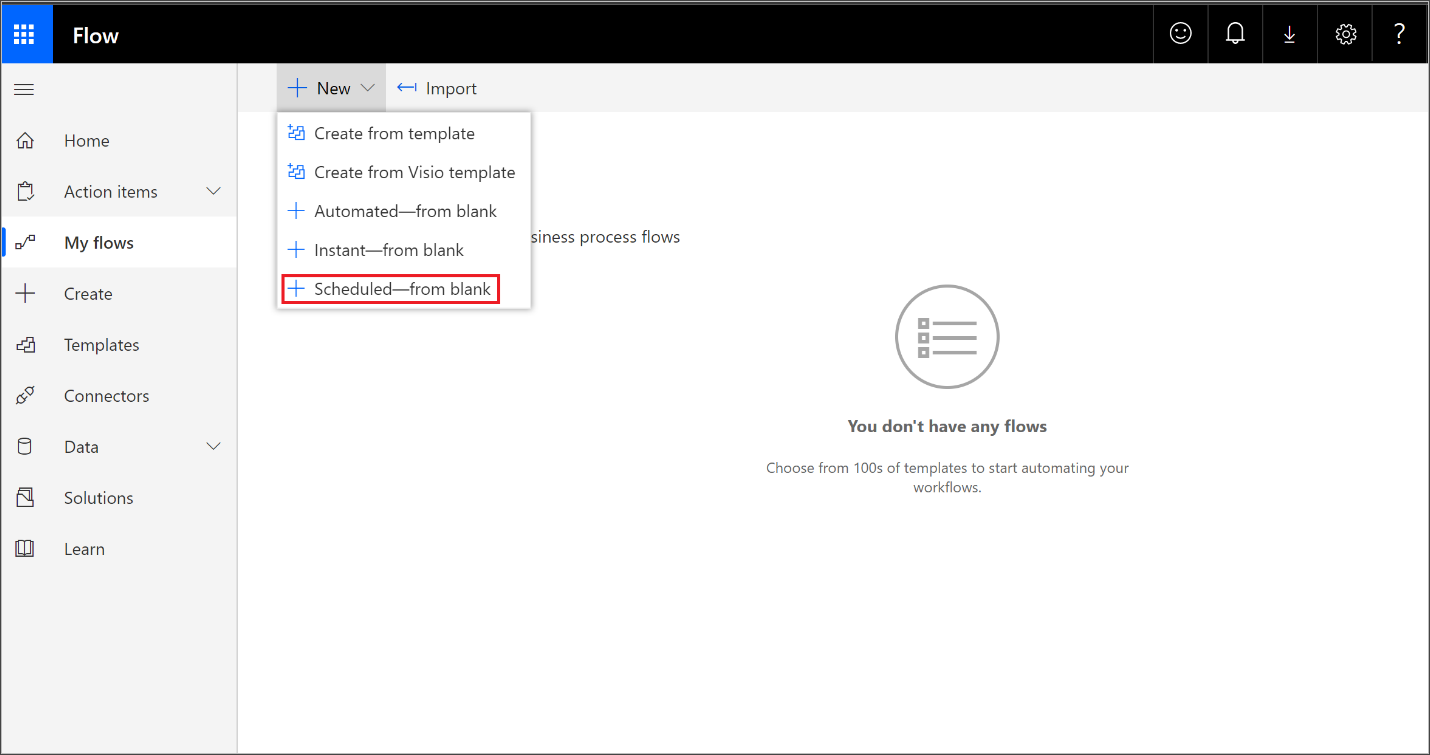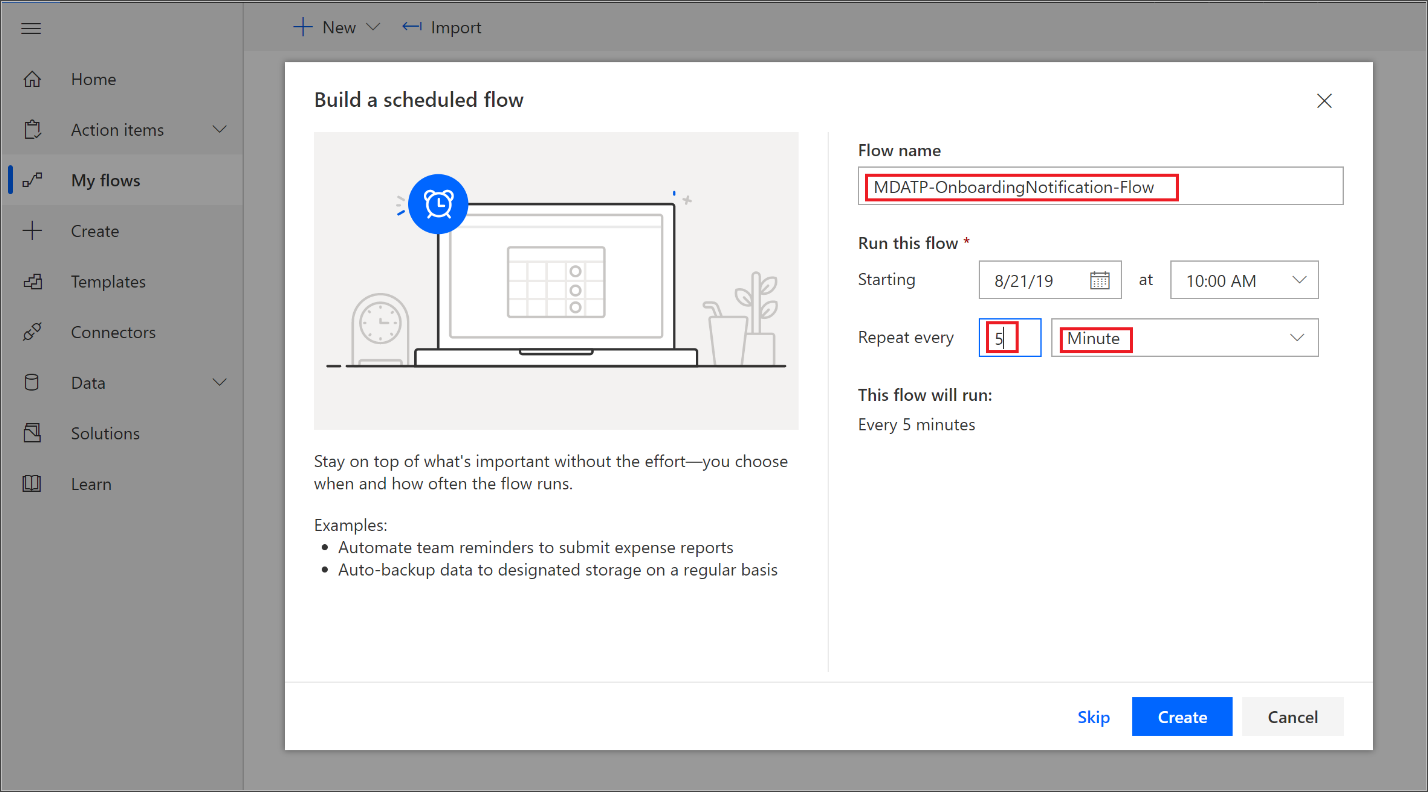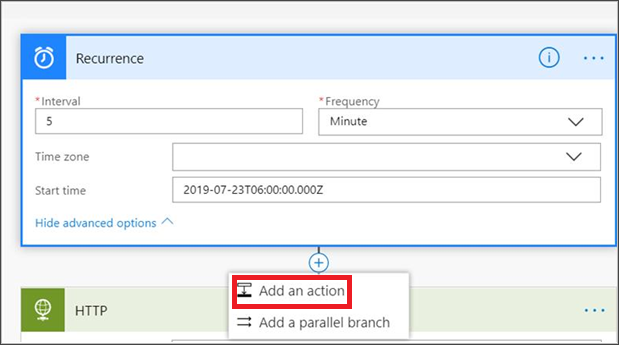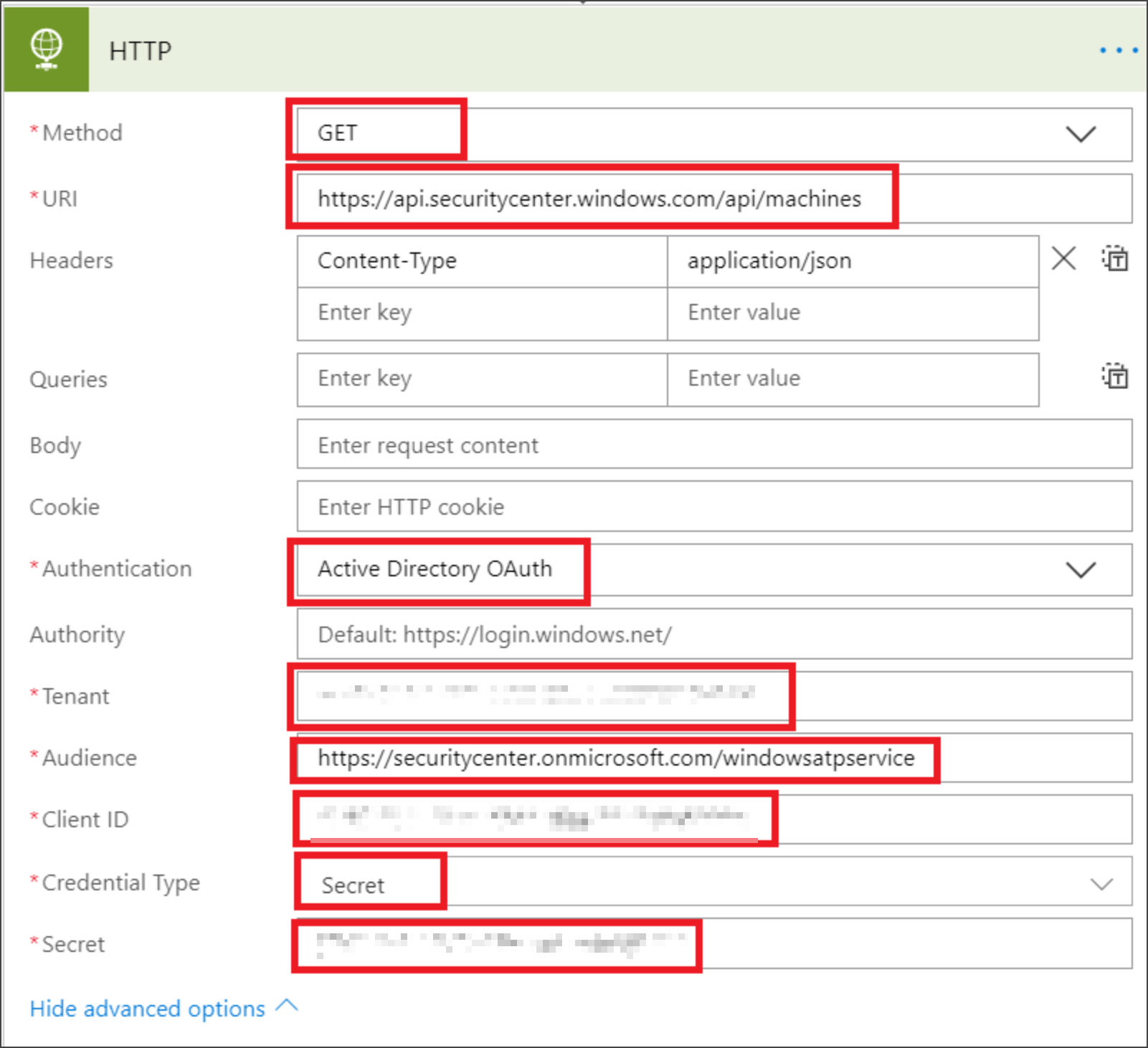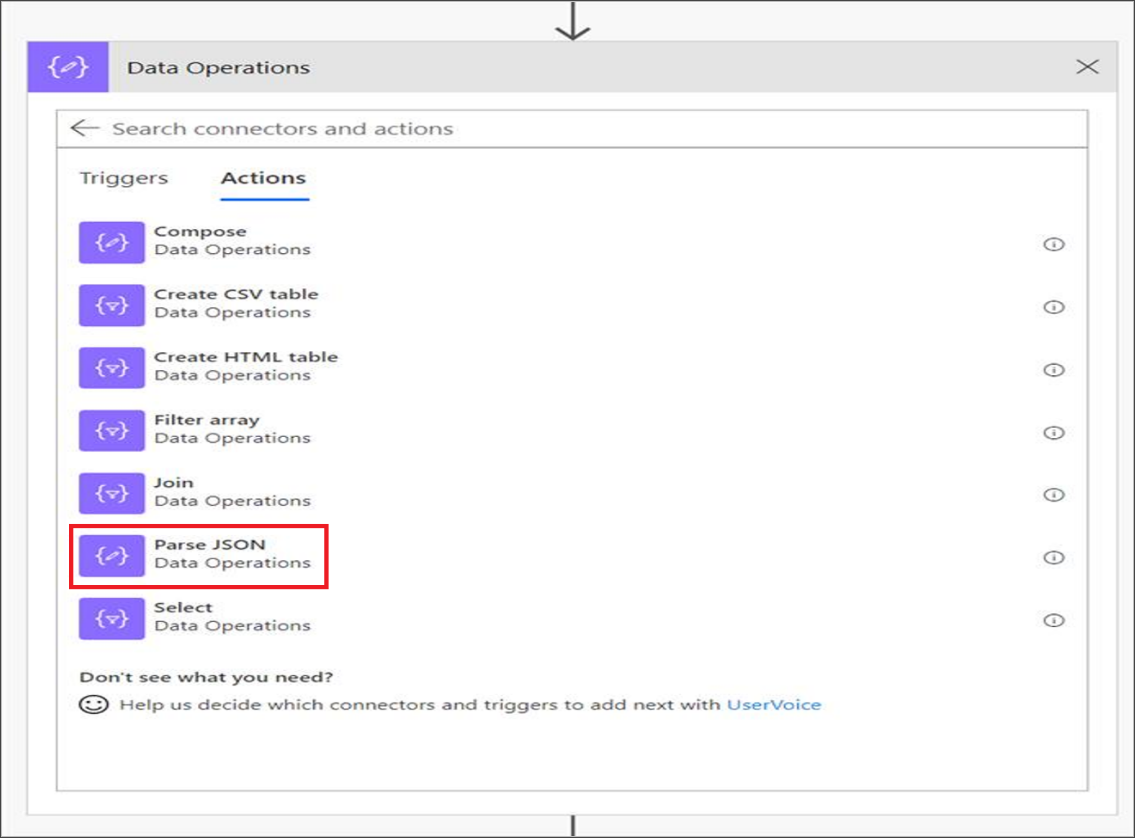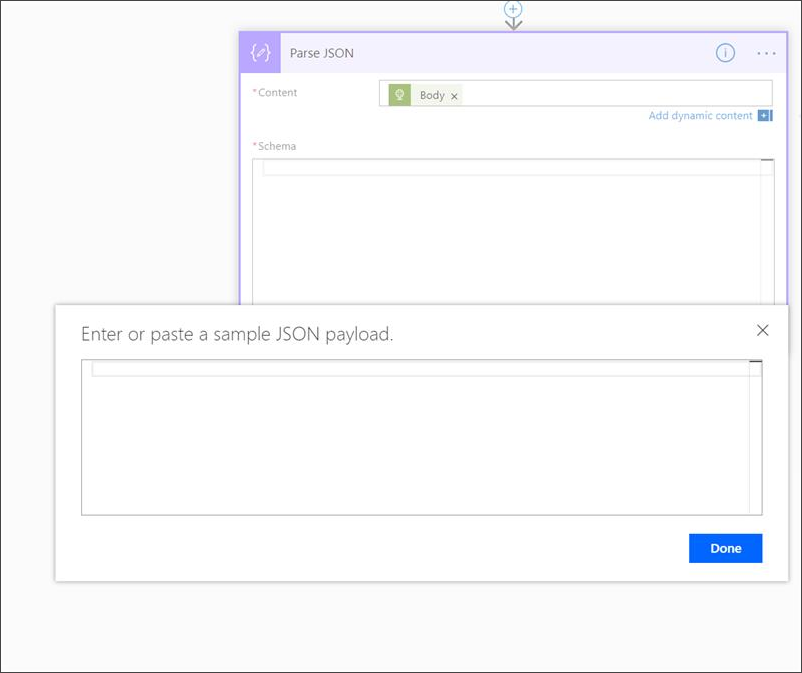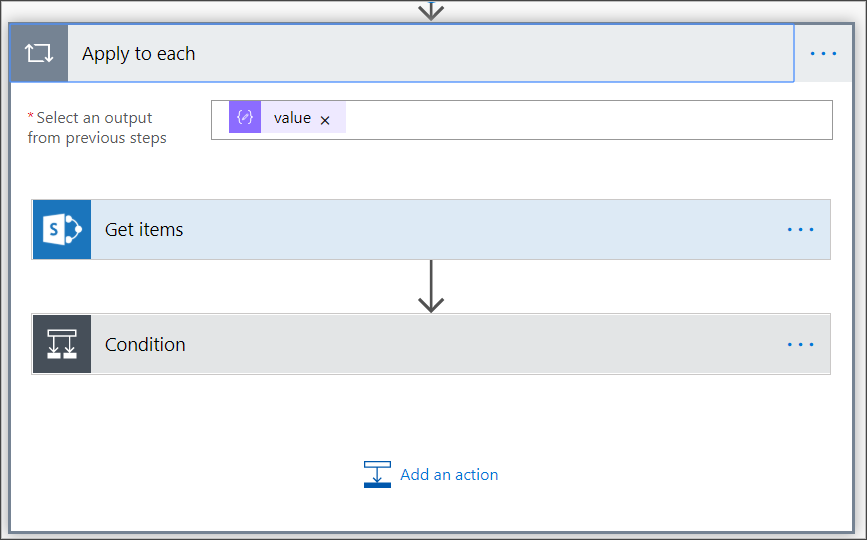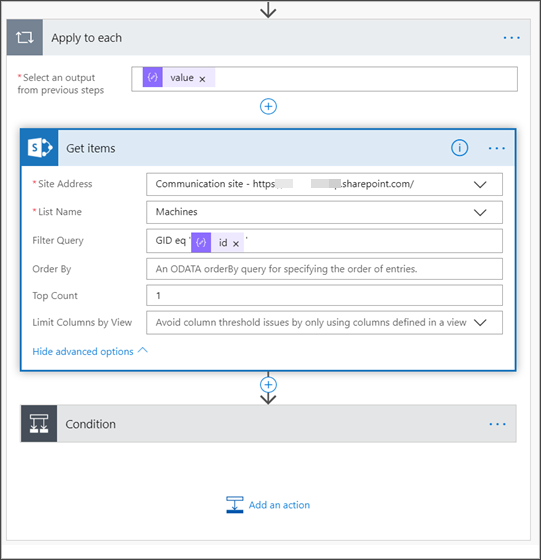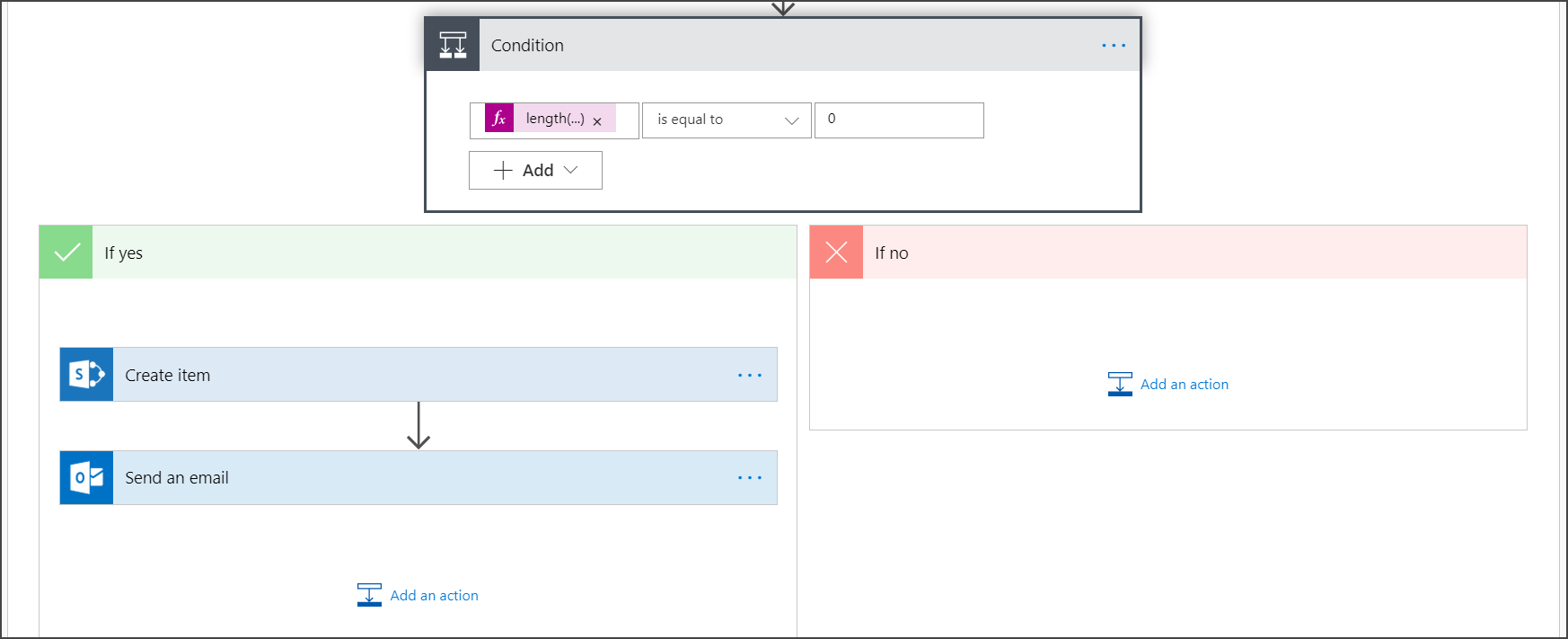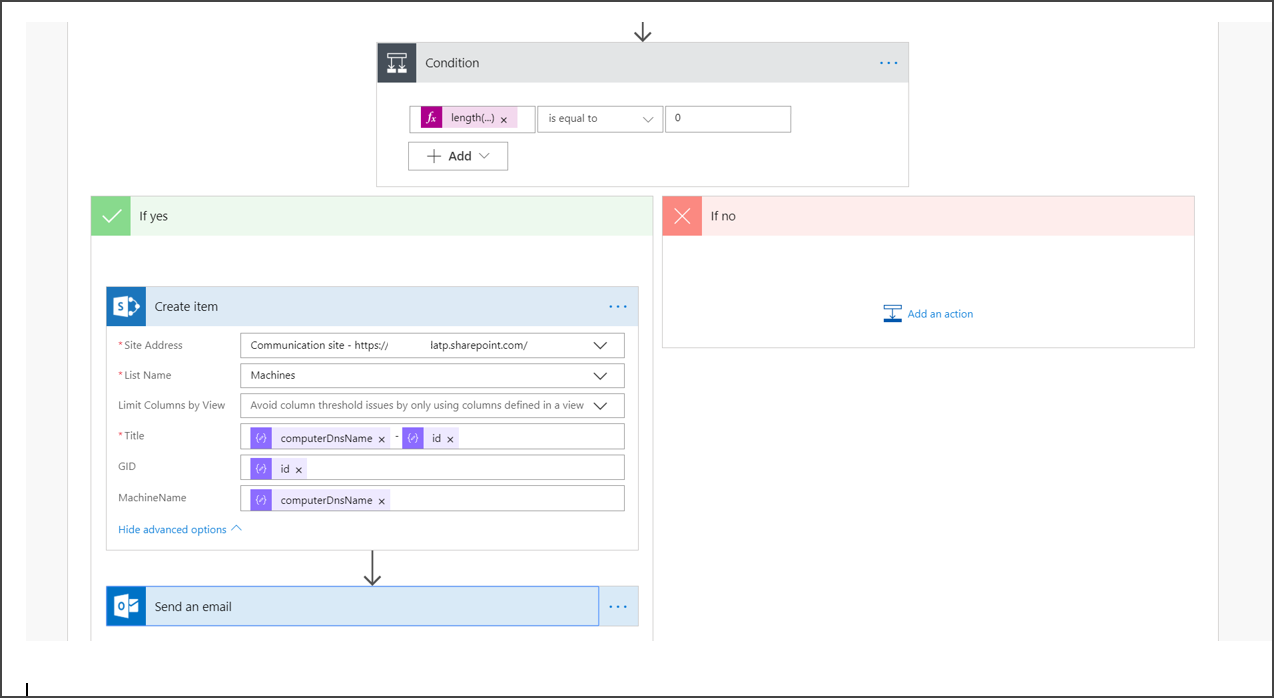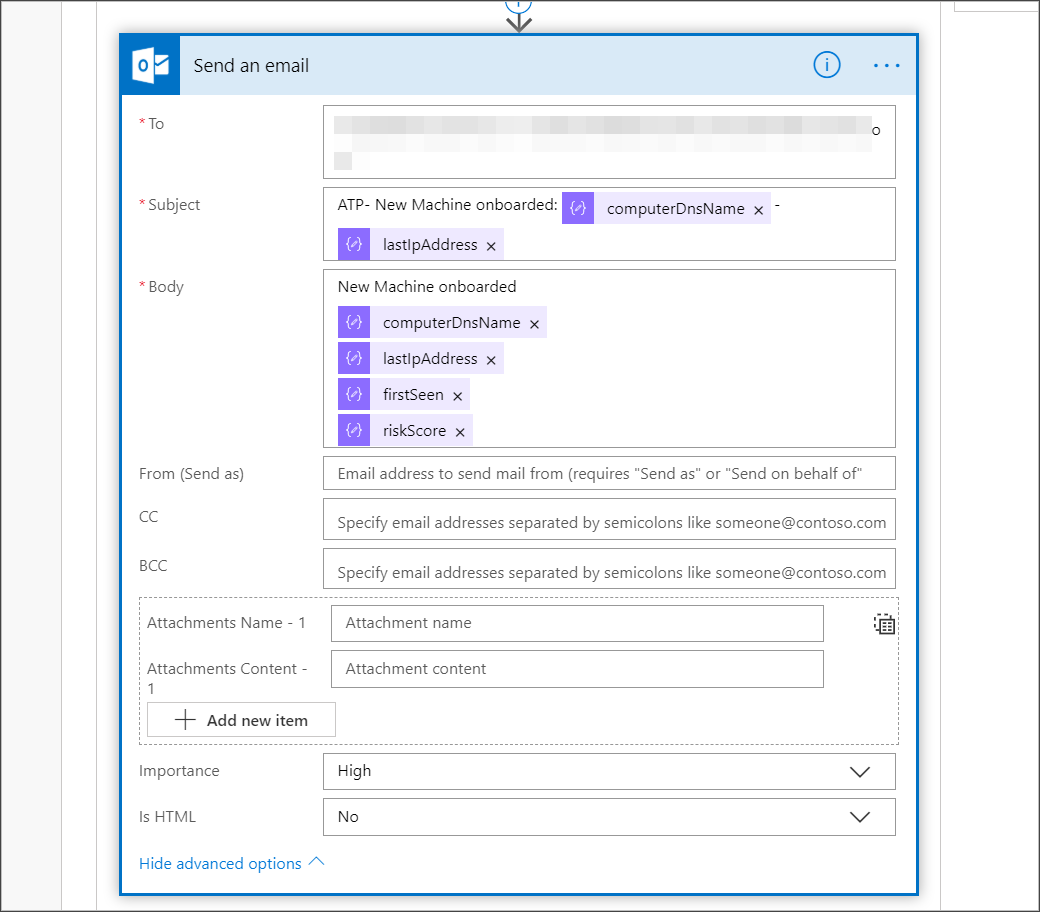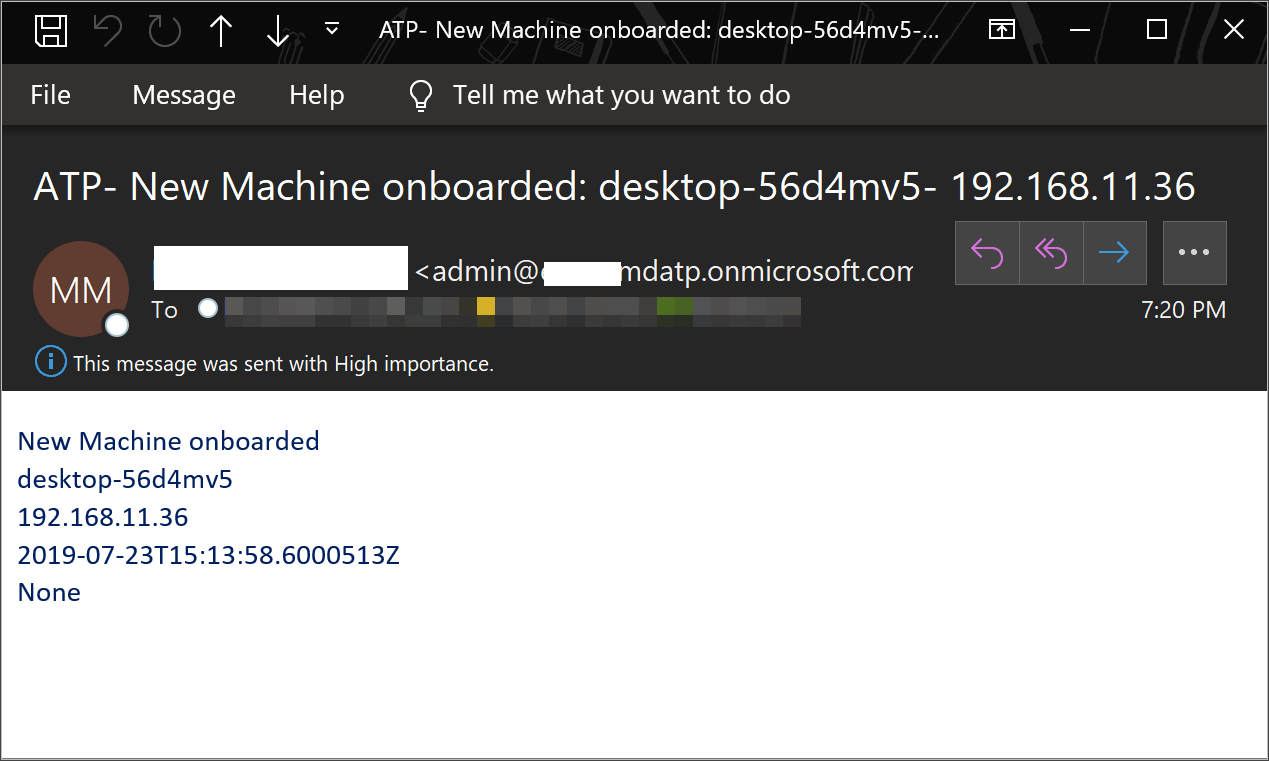Create a notification rule when a local onboarding or offboarding script is used
Applies to:
- Microsoft Defender for Endpoint Plan 1
- Microsoft Defender for Endpoint Plan 2
- Microsoft Defender XDR
Want to experience Microsoft Defender for Endpoint? Sign up for a free trial.
Note
If you are a US Government customer, please use the URIs listed in Microsoft Defender for Endpoint for US Government customers.
Tip
For better performance, you can use server closer to your geo location:
- api-us.securitycenter.microsoft.com
- api-eu.securitycenter.microsoft.com
- api-uk.securitycenter.microsoft.com
- api-au.securitycenter.microsoft.com
Create a notification rule so that when a local onboarding or offboarding script is used, you are notified.
Before you begin
You need to have access to:
- Power Automate (Per-user plan at a minimum). For more information, see Power Automate pricing page.
- Azure Table or SharePoint List or Library / SQL DB.
Create the notification flow
Navigate to My flows > New > Scheduled - from blank.
Build a scheduled flow.
- Enter a flow name.
- Specify the start and time.
- Specify the frequency. For example, every 5 minutes.
Select the + button to add a new action. The new action is an HTTP request to the Defender for Endpoint devices API. You can also replace it with the out-of-the-box WDATP Connector (action: Machines - Get list of machines).
Enter the following HTTP fields:
- Method: GET as a value to get the list of devices.
- URI: Enter
https://api.securitycenter.microsoft.com/api/machines. - Authentication: Select Active Directory OAuth.
- Tenant: Sign-in to https://portal.azure.com and navigate to Microsoft Entra ID > App Registrations and get the Tenant ID value.
- Audience:
https://securitycenter.onmicrosoft.com/windowsatpservice\ - Client ID: Sign-in to https://portal.azure.com and navigate to Microsoft Entra ID > App Registrations and get the Client ID value.
- Credential Type: Select Secret.
- Secret: Sign-in to https://portal.azure.com and navigate to Microsoft Entra ID > App Registrations and get the Tenant ID value.
Add a new step by selecting Add new action then search for Data Operations and select Parse JSON.
Add Body in the Content field.
Select the Use sample payload to generate schema link.
Copy and paste the following JSON snippet:
{ "type": "object", "properties": { "@@odata.context": { "type": "string" }, "value": { "type": "array", "items": { "type": "object", "properties": { "id": { "type": "string" }, "computerDnsName": { "type": "string" }, "firstSeen": { "type": "string" }, "lastSeen": { "type": "string" }, "osPlatform": { "type": "string" }, "osVersion": {}, "lastIpAddress": { "type": "string" }, "lastExternalIpAddress": { "type": "string" }, "agentVersion": { "type": "string" }, "osBuild": { "type": "integer" }, "healthStatus": { "type": "string" }, "riskScore": { "type": "string" }, "exposureScore": { "type": "string" }, "aadDeviceId": {}, "machineTags": { "type": "array" } }, "required": [ "id", "computerDnsName", "firstSeen", "lastSeen", "osPlatform", "osVersion", "lastIpAddress", "lastExternalIpAddress", "agentVersion", "osBuild", "healthStatus", "rbacGroupId", "rbacGroupName", "riskScore", "exposureScore", "aadDeviceId", "machineTags" ] } } } }Extract the values from the JSON call and check if the onboarded devices is / are already registered at the SharePoint list as an example:
- If yes, no notification is triggered
- If no, will register the newly onboarded devices in the SharePoint list and a notification is sent to the Defender for Endpoint admin
Under Condition, add the following expression: "length(body('Get_items')?['value'])" and set the condition to equal to 0.
Alert notification
The following image is an example of an email notification.
Tips
You can filter here using lastSeen only:
- Every 60 min:
- Take all devices last seen in the past seven days.
- Every 60 min:
For each device:
- If last seen property is on the one hour interval of [-7 days, -7days + 60 minutes] -> Alert for offboarding possibility.
- If first seen is on the past hour -> Alert for onboarding.
In this solution, you don't have duplicate alerts.
There are tenants that have numerous devices. Getting all those devices might require paging.
You can split it to two queries:
For offboarding take only this interval using the OData $filter and only notify if the conditions are met.
Take all devices last seen in the past hour and check first seen property for them (if the first seen property is on the past hour, the last seen must be there too).
Tip
Do you want to learn more? Engage with the Microsoft Security community in our Tech Community: Microsoft Defender for Endpoint Tech Community.
Feedback
Coming soon: Throughout 2024 we will be phasing out GitHub Issues as the feedback mechanism for content and replacing it with a new feedback system. For more information see: https://aka.ms/ContentUserFeedback.
Submit and view feedback for
